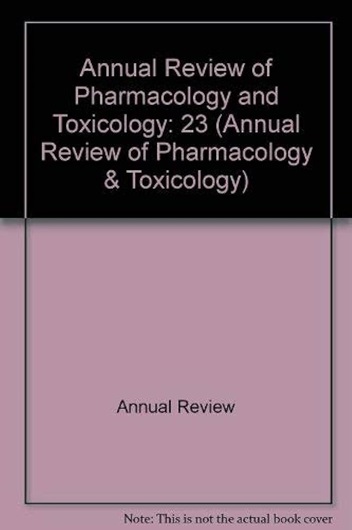Levering Mechanically Activated Piezo Channels for Potential Pharmacological Intervention.
IF 11.2
1区 医学
Q1 PHARMACOLOGY & PHARMACY
Annual review of pharmacology and toxicology
Pub Date : 2020-01-08
DOI:10.1146/annurev-pharmtox-010919-023703
引用次数: 71
Abstract
The mechanically activated Piezo channels, including Piezo1 and Piezo2 in mammals, function as key mechanotransducers for converting mechanical force into electrochemical signals. This review highlights key evidence for the potential of Piezo channel drug discovery. First, both mouse and human genetic studies have unequivocally demonstrated the prominent role of Piezo channels in various mammalian physiologies and pathophysiologies, validating their potential as novel therapeutic targets. Second, the cryo-electron microscopy structure of the 2,547-residue mouse Piezo1 trimer has been determined, providing a solid foundation for studying its structure-function relationship and drug action mechanisms and conducting virtual drug screening. Third, Piezo1 chemical activators, named Yoda1 and Jedi1/2, have been identified through high-throughput screening assays, demonstrating the drugability of Piezo channels. However, the pharmacology of Piezo channels is in its infancy. By establishing an integrated drug discovery platform, we may hopefully discover and develop a fleet of Jedi masters for battling Piezo-related human diseases. Expected final online publication date for the Annual Review of Pharmacology and Toxicology, Volume 60 is January 6, 2020. Please see http://www.annualreviews.org/page/journal/pubdates for revised estimates.利用机械激活的压电通道进行潜在的药理学干预。
机械激活的Piezo通道,包括哺乳动物中的Piezo1和Piezo2,用作将机械力转换为电化学信号的关键机械转换器。这篇综述强调了压电通道药物发现潜力的关键证据。首先,小鼠和人类的基因研究都明确证明了压电通道在各种哺乳动物生理学和病理生理学中的突出作用,验证了它们作为新的治疗靶点的潜力。第二,2547个残基的小鼠Piezo1三聚体的冷冻电镜结构已经确定,为研究其结构-功能关系和药物作用机制以及进行虚拟药物筛选提供了坚实的基础。第三,名为Yoda1和Jedi1/2的Piezo1化学激活剂已通过高通量筛选分析鉴定,证明了Piezo通道的可药用性。然而,压电通道的药理学还处于初级阶段。通过建立一个综合的药物发现平台,我们有望发现并发展一支绝地大师队伍,对抗与压电相关的人类疾病。《药理学与毒理学年度评论》第60卷预计最终在线出版日期为2020年1月6日。请参阅http://www.annualreviews.org/page/journal/pubdates用于修订估算。
本文章由计算机程序翻译,如有差异,请以英文原文为准。
求助全文
约1分钟内获得全文
求助全文
来源期刊
CiteScore
27.80
自引率
0.00%
发文量
53
期刊介绍:
Since 1961, the Annual Review of Pharmacology and Toxicology has been a comprehensive resource covering significant developments in pharmacology and toxicology. The journal encompasses various aspects, including receptors, transporters, enzymes, chemical agents, drug development science, and systems like the immune, nervous, gastrointestinal, cardiovascular, endocrine, and pulmonary systems. Special topics are also featured in this annual review.

 求助内容:
求助内容: 应助结果提醒方式:
应助结果提醒方式:


